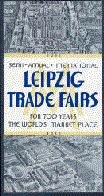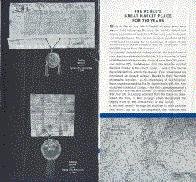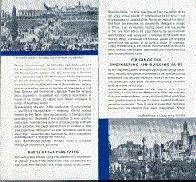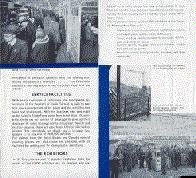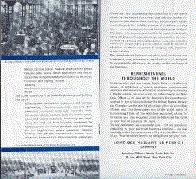POSTER STAMPS AND POSTCARDS OF THE BUGRA -- LEIPZIG, 1914
Internationale Ausstellung für Buchgewerbe und Graphik
|
Introduction The Königliche Akademie für Graphische Künste und Buchgewerbe New York Times article about the Bugra
|
WHY LEIPZIG? Leipzig in 1914 was the premier city for trade fairs in all of Europe. With a population of 600,000, and Europe's largest train station, it was one of Germany's most dynamic cities. It had been the center for German and even European trade fairs for over seven hundred years, since it was located at the intersection of major northern European trade routes. In 1497, Emperor Maximilian the First, head of the Holy Roman Empire, granted to the Leipzig Fairs the status of Fairs of the Empire, acknowledging and cementing their pre-eminence. As power shifted in Europe over the following centuries, Leipzig became even more important as a trade center, and was instrumental in the development of the modern "sample fairs." By the early 20th century it had established a tradition of two Fairs per year, the Spring Fair, in March, and the Autumn Fair, in October. 1913 was the centennial of the German Wars of Liberation, as well as the silver (25th) anniversary of the reign of Kaiser Wilhelm II, and the Kaiser declared it a year of national celebration. 1913 was also the centennial of the 1813 Battle of Leipzig (the "Battle of Nations"), which took place near Leipzig, and in which Napoleon was decisively defeated by the anti-French allies, thereby freeing most of Germany. A huge memorial to the Battle of Leipzig was completed in Leipzig in 1913 for the centennial, and in addition to the celebrations surrounding that, there was a special International Building Exhibition (the Internationale Baufach Ausstellung, or IBA), as well as other related exhibitions, and the 12th German Gymnastics Festival (XII Deutches Turnfest). Each of these generated unprecedented numbers of poster stamps. Some of those can be seen HERE. In addition to its status as a center for trade fairs, Leipzig had become a major center for book printing and graphic arts in Germany. It was the home of the Königliche Akademie für Graphische Künste und Buchgewerbe (Royal Academy for the Graphic Arts and Book Industry), the most prestigious college in Germany at that time for those disciplines. 1914 was the 150th anniversary of its founding. The 1935 pamphlet below tells the story of the Leipzig Trade Fairs. Click on any thumbnail to open that page in a new window. Use the arrows on the full-size views to move forward or backward through the pages. |
All text and images are the property of the author. Any errors are his.
If you have better or additional information about anything shown or discussed here, please Email the webmaster.
Home

All text Copyright © 2010, William M. Senkus
Send feedback to the webmaster:
CLICK HERE
Created -- 07/11/2010
Revised -- 08/15/2025
